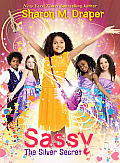We started out sitting back there by the light/sound table, thinking we were on enough of a hill that we'd be able to see. Our picnic dinner from Whole Foods was spread and we were enjoying curried turkey salad and cranberry tuna salad (and looking forward to the Laceys), when a hoard of chickie-booms planted their chairs in front of us, effectively blocking the view. It was then that we decided to take the usher up on a seat on the stage.
This was our new view! Much better!
A little bit of truth in advertising about me and The Bard. I don't go to Shakespeare Camp, like Sara Lewis Holmes does. I don't spend all of June brushing you up on your Shakespeare, like Kelly Fineman does. (Nor has The Old Spice Guy made a video response to any of my tweets, like he did for Kelly...)
In fact, on the way home from the play, I wondered aloud how it's possible that I can't understand half of the lines in Shakespeare, and yet I can perfectly follow what's going on in the story?!?! (It does get easier in the second half. It's like your ear gets tuned to Shakespearean English.)
I didn't get any pictures from the first half of the play, because I hadn't figured out how to silence my new camera, and what with sitting at the edge of the stage, I couldn't have all that beeping and booping.
Needless to say, Don John was evil and meddling, Beatrice was sharp-witted and strong-willed, Benedick was so set against marriage that even the dullest audience member had to know he'd be hooked by the end of the play, and Hero was sweet and demure and so pure that when Claudio spurns her at the altar...
...you want to get up there on the stage and smack him upside the head!
Here's when Benedick and Beatrice fall in love...but only because they each have been tricked into believing that the other is in love with them.
Now the "cops" have captured the meddlers that Don John hired to convince Claudio that Hero was not a pure woman. This little guy played Boy as well as "cop." In the program, his bio tells that this play "marks his professional debut, though he has appeared in a number of church Christmas pageants and school plays. Favorite roles include the title character in the Gingerbread Man, 2nd Billy Goat Gruff and 3rd Angel From the Left. When not onstage he enjoys fried chicken, the Wii game system, and Cub Scouting. He begins fourth grade in the fall." (could he be in my room, please?!?)
This is the part when Dogberry (little guy's dad in real life) tries so hard to convince everyone that it should be written in the record that he's been called an ass.
And then all the tangles get untangled and all the right people get married and the evil meddler is dispatched, the end.
But not quite the end. On the drive home, I checked to see if Kindle has Much Ado About Nothing. For less than a dollar, I downloaded it wirelessly to my iPhone Kindle (there's an app for that), and now I'll be able to go back and find my favorite lines and parts while they are fresh in my mind.












































